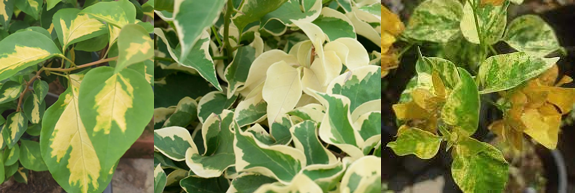Bougainvillea Comm. ex. Juss. (Nyctaginaceae) comprises 11 spp., 9 from Ecuador to S Agentina and Paraguay (5 of them up to Brazil), and two endemics to Brazil (SSAA). This genus is very important within the horticultural trade where the species B. glabra, B. spectabilis and many hybrids and cultivated varieties are widely commercialized as ornamentals for their long-lasting, colourful flower bracts. Although flower bracts of purple, pink or red colour are commonly seen, cultivars are now available in apricot, white, blue, yellow and orange (Cabi Digital Library).
Currently, both wild and cultivated forms of B. spectabilis Willd. are commercialized and have probably been introduced repeatedly across tropical and warm temperate regions of the world. Apparently, the main difference between these two forms is that in the wild form flowers have simple bracts and produce reproductive structures while cultivars have flowers with multi-whorl bracts but are sterile. In this species, the cultivated varieties have been selected to have multi-whorl flowers, a type of floral abnormality in which some or all of the stamens in a flower are replaced by petals, and the carpel is replaced by sepals or petals. These cultivars with multi-whorl bracts have great ornamental and commercial value, but are sexually sterile (do not develop sexual organs) and must be propagated through cuttings (Cabi Digital Library).

